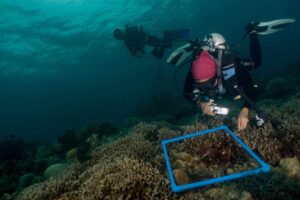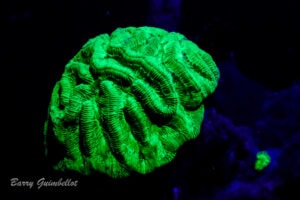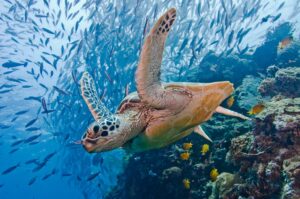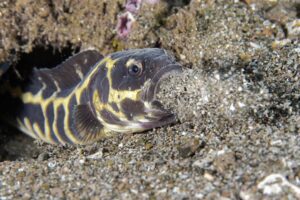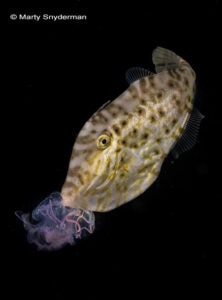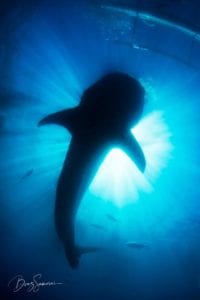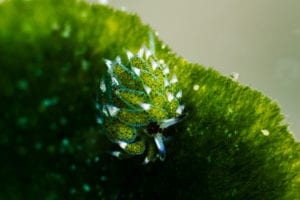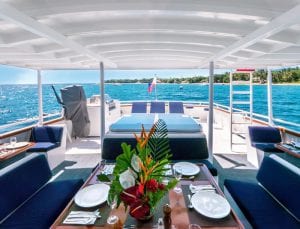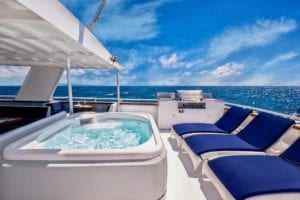Paddle-Flaps in Puerto Galera and Dumaguete
Text and photographs by Atlantis Photography Ambassador Marty Snyderman
Over the course of a diving lifetime it is almost a certainty that there will be memorable dives created by encountering creatures that are not often seen. Photographer David Haas and I shared several of those dives recently when diving with the Atlantis Team at both Puerto Galera and Dumaguete. The first occurred when we came across two bizarre-looking scorpionfishes, a weedy scorpionfish and a paddle-flap scorpionfish, while diving in approximately 60 feet of water on the reef immediately in front of the resort in Puerto Galera when the magenta hued body of the paddle-flap scorpionfish captured our attention. That was a cool moment and a great “find”!
As we settled in to take a closer look at this wonderful specimen, David spotted the weedy scorpionfish (see photo #1) resting on the rubble bottom only a couple of feet away. Both species are masters of camouflage, and finding them on the same dive created a truly memorable experience!
Feeding primarily on a mix of mollusks, ghost shrimps, small bony fishes and a variety of other relatively small reef creatures, the weedy scorpionfish, Rhinopias frondosa, usually seeks its prey at night. During the day it rests almost motionless of the sea floor or it “rocks back and forth” as if to mimic the movements of seaweed or debris in current or surge.
Like two other species described in its genus (the weedy and lacy scorpionfishes), the paddle-flap scorpionfish (see photo # 2) is often referred to as a Rhinopias due to its genus name. The name is derived from the Greek words rhinos, meaning nose, and ops, meaning appearance. A quick look at the accompanying photographs is all it takes to see that the name is certainly apropos.
A generally sluggish animal, the paddle-flap relies on its ability to blend in with its surroundings to go sight unseen. Due to the often, colorful bodies of the adults which appear in hues of bright yellow, green, red, orange, gray and purple, it is surprising how well camouflaged these fish can be.
Although paddle-flaps do swim, they usually move around by awkwardly “walking” across the sea floor on their pectoral fins. They are ambush predators that rely on stealth and a sudden strike to capture their prey.
Even though David and I had some nice images from our first encounter, we decided to go back to the same site to see if we could find the paddle-flap again. After searching for about 10 minutes, I saw some movement in front of me. Focusing on the action, I realized that the “movement” was our paddle-flap capturing a meal.
In photographs #3 and #4 you can see a small butterflyfish in the paddle-flap’s mouth.
What a great encounter! Lucky us!
The following week, David and I joined the other Atlantis ImageMakers and traveled to Dumaguete where we came across an almost “pure white, yawning” juvenile (see photo #5) paddle-flap scorpionfish. How lucky can you get? I guess David and I have been living right!
As unusual as these encounters are, in some respects unusual encounters seem to be the order of the day when exploring the underwater world of both Atlantis Puerto Galera and Atlantis Dumaguete. I hope you get the chance to join us soon!
[/vc_column_text][/vc_column][vc_column width=”1/2″][vc_column_text]
[/vc_column_text][/vc_column][/vc_row]


